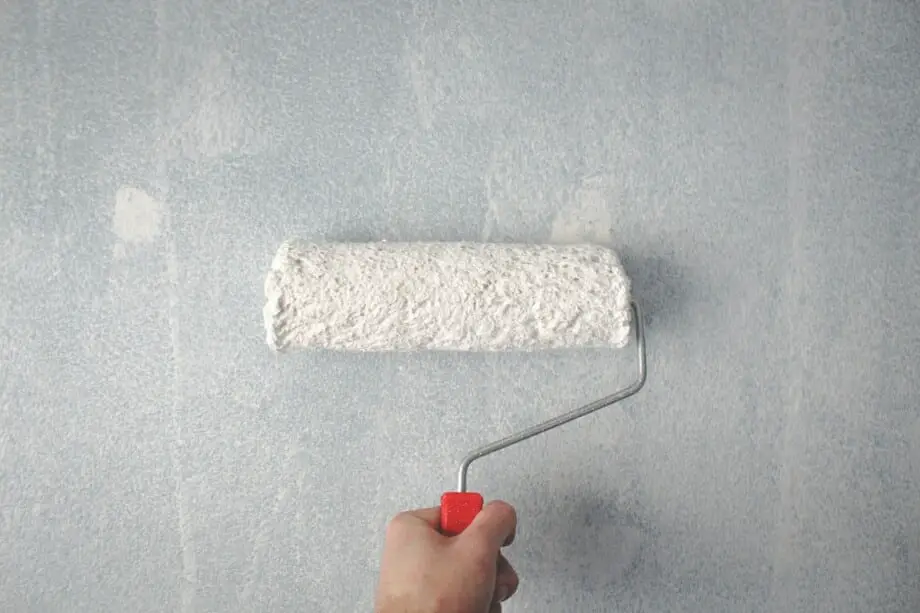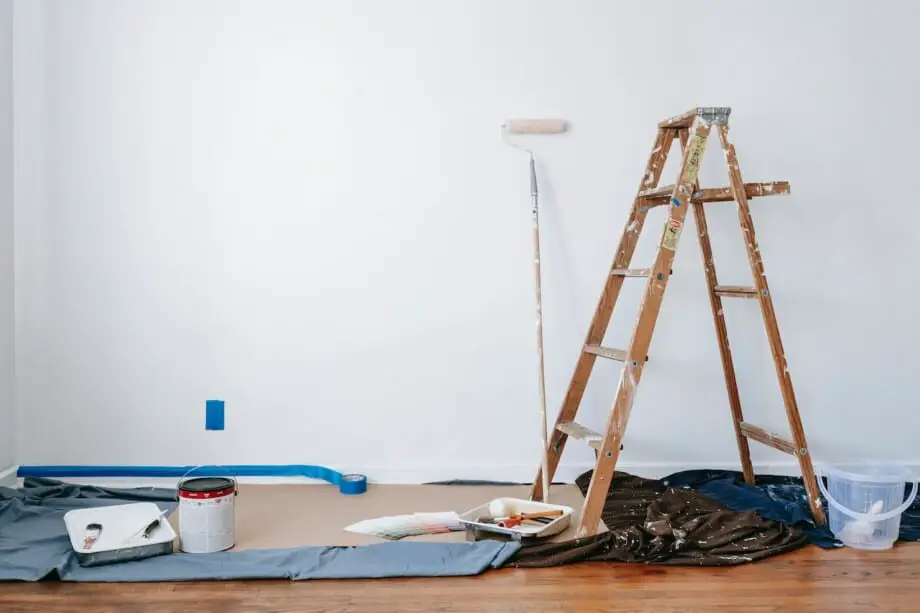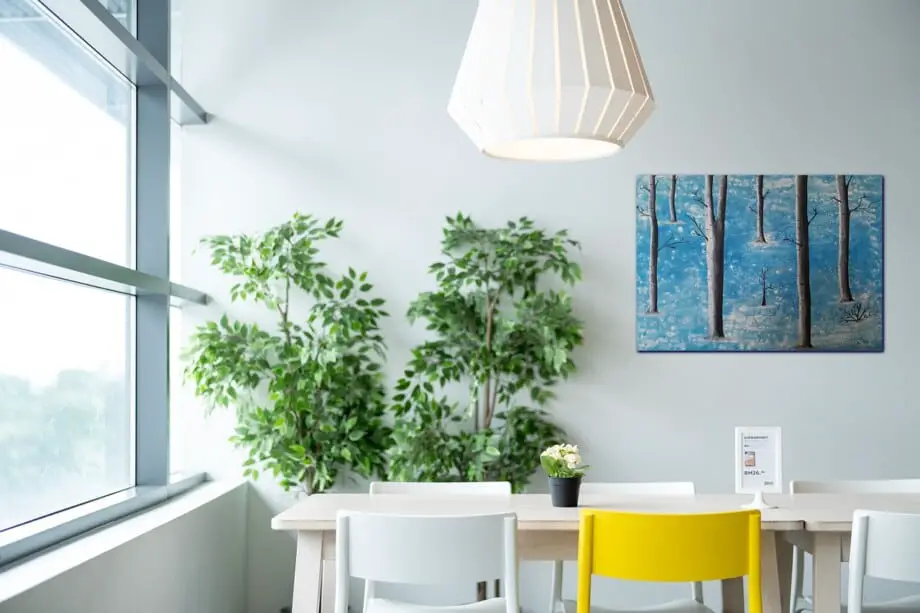“Practice makes perfect” stands true especially when years of experience are at hand. Painting over the past few years has taught me a great deal, and it is absolutely necessary to understand how to go about your painting job to achieve the desired post-paint look on the walls: Primer is one important ingredient.
Yes, it is necessary to use a primer before you start painting indoors. It will give a professional finish on your walls. Skipping the primer will require additional coats of paint to even out the walls. However, you can skip the primer if you are reapplying the same shade of paint to freshen up the walls.
Painting your house is time-consuming, and you want to do it right the first time to make it last for years to come. Make sure you know how important primers are for your interior walls prior to painting them.
Primer: the foundation for paints
Primers are the undercoats that prepare your walls for painting. They cover the surface entirely to provide a smooth-finished canvas for you to begin your painting project. Without primer, it would be “painting on a crooked surface”.
Primers look like sticky paints or sealants that adhere to the walls flattening its surface making it perfectly clear of any cracks, cuts, dents and gaps. After applying primer, painting becomes a piece of cake, and you will love the final results.
Benefits of using a primer
Interior paints can last up to 10 years if painted using a primer. Below are some ways you can benefit from priming the interior walls before painting.
1. Optimizes painting surface
Primers can help optimize the painting surface by filling in the cracks and pores on the interior walls. The formula of primers contains sealants that get inside these pores and cracks and adhere firmly. This prevents the primer from coming out after the painting process is finished.
Moreover, depending on the type of primer, it can also absorb moisture in the walls or eradicate excessive dryness so the paint can sit neatly on the walls.
2. Improves adhesion and compatibility
Primer’s adheasive properties cannot be taken taken for granted. A glue-like base for your drywall, it really helps the paint stick neatly to the surface. They hold the paint in place and enhance the top coat finish minimizing the chances of top coat failure.
Skipping this step will be a risk that could give you chipping, pealing and staining on walls, just a couple of months into the future. Redoing your walls would cost you money and time both.
Primer will make your walls hold the paint longer, look neater, feel smoother and smell fresh for a years ahead.
3. Saves time and money
Without the primer, you may have to use multiple coats, more than the usual requirement, to achieve smoother finish and to get the desired color of the paint on the wall. Extra paint could be utilized to eradicate the unwanted marks on the walls. All that means a great amount of extra paint is going to be used unnecessarily.
Using a primer will create a base that makes your desired color pop out in fewer coats, covering all those unwanted marks on the walls, and saving a great amount of time and money.
Moreover, paints applied over primers last longer, and gives an amazing ambience to the room.
4. Provides quality and finishing to the walls
No one wants walls that begin cracking in a couple of weeks after painting, nor does anyone want ugly spots to reappear. We also do not wish to see textured walls after working all day long for a smooth finish, right!
Smoothing out uneven surfaces and adding value to the paint quality is what a primer does. Invest in a primer if you want a professional-like finish on your interior walls.
Why is priming a wall necessary?
1. To avoid tough stains and bad odor on walls
Priming becomes necessary if your walls have any stains, marks and dark blotches. These could be cooking stains, grease spots, water damage, or your child’s random artwork. Priming will permanently seal any of these, so they can be hidden but most importantly they remain hidden years after the paint is applied.
Another most amazing quality of a premier is it cover any terrible odors that the walls soak up over time. If your walls smell of cigarette smoke, pets or any other unpleasant odor, you must prime your walls before repainting them.
2. Before painting drywalls
Drywalls cannot be painted directly. The surface of fresh drywall is highly porous, and absorbs most of the paint. If the walls are not primed, you will need to apply multiple coats of paint before you get an even finish, and then too the finished wall is not guaranteed to meet your expectations.
The primer get into the holes and cracks and prevents the paint from getting absorbed into the drywall ensuring a smooth paint application. The paint adheres better on a primed wall and is not affected by temperature changes inside the room.
3. To avoid moisture-related damage in humid areas
Wall paint is more prone to damage in areas with high humidity. Moisture can cause molds to form and paint to peel off faster. Priming the walls is essential especially in kitchens or bathrooms where the humidity is very high as it will prevent any damage and ensure longevity.
4. While painting repaired walls
When walls are repaired, patches of spackle are left behind. The application is not smooth if the paint is applied directly on these patches. Cracks may reappear after some time, so applying a coat of primer is necessary before painting the wall to reduced these imperfections.
5. Applying paint to glossy surfaces
The paint does not adhere well to glossy surfaces. It needs a slight texture to stick to the walls. Using a primer before painting the wall provides a base for the paint to set in.
The primer will adhere to any shiny surface, and you can easily apply paint on top of it.
Sometimes these surfaces need sanding and rebuffing before they are primed.
6. Porous surfaces
Materials like untreated wood on fresh drywalls are highly porous. They will absorb any paint applied to them right away. To prevent this from happening, priming the walls is very important.
A coat or two of primer is good enough to fill the pores and prepare the wall for painting. Primer acts as a sealant, saving the paint from getting absorbed into the walls.
7. Changing the color of your wall
If you want to change the outlook of your room, you might want to switch to a color on the other end of the color wheel. Transitioning from a darker to a lighter shade is impossible without using a primer. The primer neutralizes the color tones so that whatever shade you apply can appear as desired. If you skip the primer in such conditions, a mixture of the two colors will be the final result. We do not guarantee how you will like it.
What happens if you do not use a paint primer for your walls?
In some situations, such as the ones mentioned above, priming walls before painting becomes necessary. If you skip primers in mandatory-to-prime situations, you’ll spend a lot of money on paint and wouldn’t even be able to achieve the perfect finish.
If you decide not to prime, you might face these issues:
- Absorption of paint into cracks and pores will give an uneven surface even after multiple coats.
- Paint will fade faster, revealing the spots and blotches underneath it.
- Changing wall color of your wall will not turn out as you required so you might have to compromise it, multiple layers might get you close though.
When can you skip the primer?
Now that you know when to use primer on interior walls let’s have a look at situations where you can skip the priming process.
Paint is infused with primer
Applying multiple coats of primers, waiting for it to dry out, and then applying coats of paint can be too much for someone working individually. To ease the process of efficient painting, paint companies have now begun manufacturing paint and primer in one paint bucket.
Since these paints are already infused with primer, you can skip the primer coat and start directly.
Reapplying the same color on walls
Priming the walls can be a lot of work. Even though it saves you money in the long run, it still appears as a considerable cost at the painting time. If you want to freshen up your interior walls with a similar shade of paint, you can start directly with the paint and skip the primer.
Frequently Asked Questions
How long after priming can you paint?
Most latex-based primers take between 30 minutes to an hour to dry out. However, it is suggested to wait for 3 to 4 hours before beginning to paint the walls. This ensures that the primer has dried off completely regardless of the temperature and humidity in the room. If the primer is wet, the paint may appear to wrinkle on the walls.
How many coats of primer do you need?
Ideally, you need two coats of primer before applying paint to the walls. In some cases where you have stubborn red or orange stains or persistent odor, you might as well have to apply three coats of primer to achieve optimal results.
Is it OK to paint over old paint without using a primer?
It is okay to paint over old paint without using a primer. Suppose you are reapplying the same color. However, if you are switching to an entirely different shade of paint on your interior walls, the color may not show up without using a primer. In such cases, applying a primer is important.
Is paint and primer in one better?
Paint and primer in one, as the name suggests, is paint mixed with primer. Not only it helps save time, but also has better-adhering properties. It tends to cover up odor and stains, fill in pores, and cover cracks.
However, since paint and primers have different functions, mixing them compromises the individual function of each. Thus, the products are better off used separately.
FINALLY – Is it necessary to use primer for interior walls?
Priming the walls is an intelligent decision. You can easily spot the difference between a primed wall and an unprimed one. It may appear as a factor that adds cost; however, you can save a massive sum of money by reducing the number of coats you need to apply and the frequency of repainting the interior walls.
If you were to begin painting without a primer, this is your sign to get one now.


